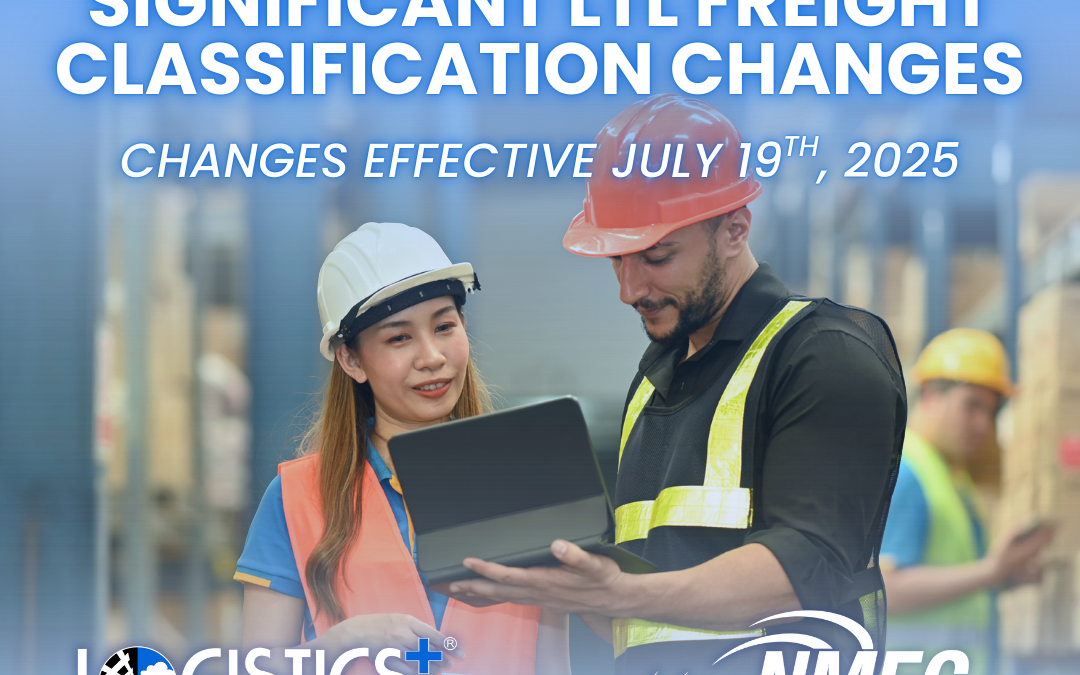
by vanessahuber | Jul 15, 2025 | News
 Shippers, take note: major freight classification changes from the National Motor Freight Traffic Association (NMFTA) go into effect this weekend, July 19–20, 2025. These updates to the National Motor Freight Classification® (NMFC) system are designed to emphasize freight density further and will significantly impact how LTL (less-than-truckload) shipments are rated, quoted, and invoiced.
Shippers, take note: major freight classification changes from the National Motor Freight Traffic Association (NMFTA) go into effect this weekend, July 19–20, 2025. These updates to the National Motor Freight Classification® (NMFC) system are designed to emphasize freight density further and will significantly impact how LTL (less-than-truckload) shipments are rated, quoted, and invoiced.
What’s Changing?
Historically, LTL freight classifications have been based on a combination of four factors: density, stowability, handling, and liability. But over the past few years, the NMFTA has been transitioning many product classes to a pure density-based structure. This latest round of changes is one of the largest yet.
- Nearly 2,000 NMFC items are being revised or consolidated
- Many classes are being reassigned based on actual freight density
- Items previously exempt from density-based classification may now require dimensional verification
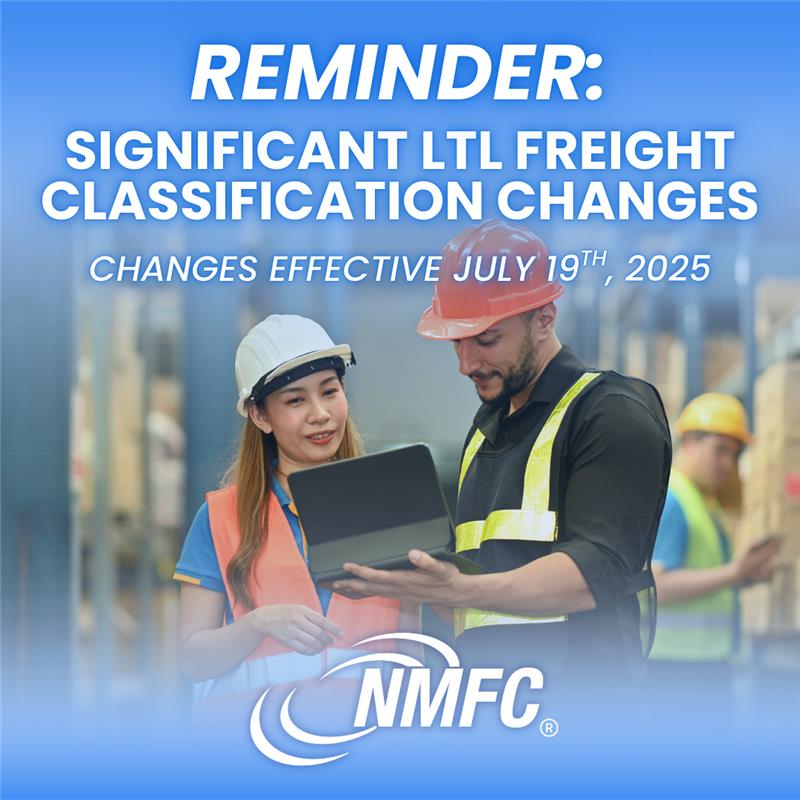 Why Density Matters More Than Ever
Why Density Matters More Than Ever
Density—the weight of your shipment divided by its volume—is becoming the primary determinant of freight classification. It directly affects how efficiently freight can be loaded and transported in LTL carrier networks. Higher-density freight occupies less space and is easier to handle, resulting in lower class ratings and more favorable rates. On the other hand, low-density or bulky freight gets rated higher, resulting in increased shipping costs.
LTL carriers rely on accurate density data to:
- Maximize trailer utilization
- Provide fair and competitive pricing
- Minimize reclassification and dispute delays
How to Prepare
To avoid surprises or reclass charges, shippers should:
- Review updated NMFC listings from the NMFTA or through Logistics Plus.
- Recalculate freight density for all impacted SKUs or shipments.
- Train shipping teams on how to properly measure and document freight.
- Use dimensional scanners or freight measuring tools where available.
- Review and optimize packaging to remove as much “airspace” as possible so that shipments are dense and compact.
How to Calculate Freight Density
Here’s a quick guide to get your density right:
- Measure dimensions of your palletized freight in inches (Length × Width × Height).
- Multiply to get cubic inches, then divide by 1,728 to convert to cubic feet.
- Divide the total weight (in pounds) by the cubic feet result.
- Result = Freight Density (lbs/ft³)
Example:
- Pallet size = 48”L × 40”W × 50”H = 96,000 cubic inches
- 96,000 ÷ 1,728 = 55.56 cubic feet
- 600 ÷ 55.56 = 10.8 lbs/ft³
Tip 1: If you are shipping a commodity with a freight classification based on its density, refer to the NMFC density tables to find the correct class for your calculated density, or ask your Logistics Plus logistics specialist to assist.
Tip 2: If you quote and ship using Logistics Plus eShipPlus™ TMS or MyLogisticsPlus™ portal, your shipment density will automatically be displayed once you enter your pieces, weight, and dimensions.
Logistics Plus is here to help!
If you’re unsure how these changes affect you or if you want help reclassifying your freight, request a risk-free NMFC freight class impact analysis or a general freight savings analysis from our LTL experts. We’ll review your shipments, provide accurate class guidance, and ensure you’re prepared for the NMFTA updates.
Contact us today with any questions or to learn more about our services.

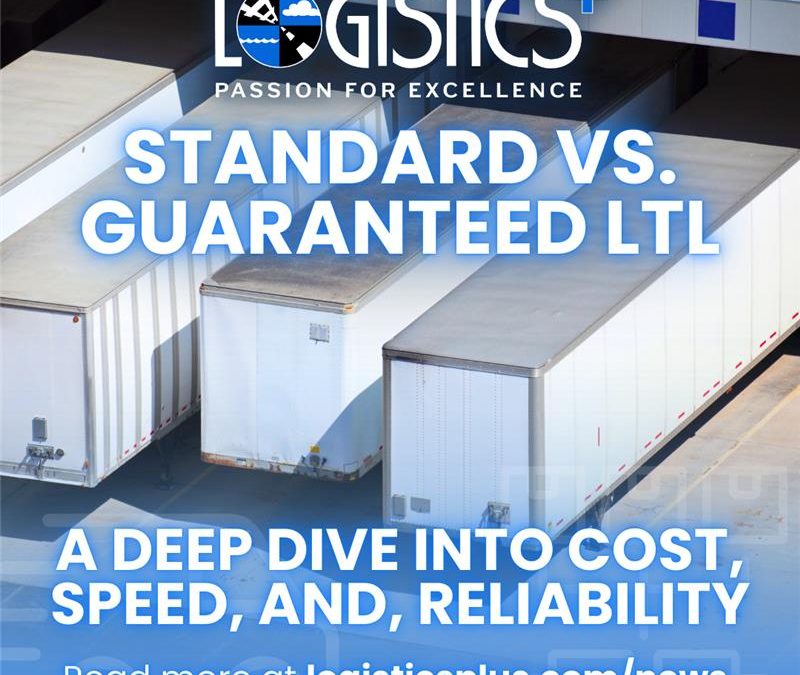
by vanessahuber | Jul 11, 2025 | News
In the world of logistics, Less Than Truckload (LTL) shipping plays a crucial role for businesses that need to move smaller freight without the expense of booking an entire truck. However, when choosing LTL shipping services, companies often face a decision: should they opt for standard or guaranteed LTL shipping? Let’s explore the differences in cost, speed, and reliability between these two options.
 What is LTL Shipping?
What is LTL Shipping?
LTL shipping is a method where multiple shipments, typically ranging from one to six pallets, are consolidated into a single truck. This approach is cost-effective for businesses that do not need a full truckload, as they only pay for the space their shipment occupies.
Standard LTL vs. Guaranteed LTL
Standard LTL shipping typically offers lower rates, making it a cost-effective option for businesses seeking to minimize shipping expenses. Since standard LTL shipments are consolidated with those of others, the cost is distributed among multiple shippers, thereby reducing the overall expense. However, the downside is that delivery schedules can be less predictable, as shipments depend on the consolidation process. On the other hand, guaranteed LTL shipping comes with a premium price. The higher LTL shipping rates are due to the promise of on-time delivery, often within a specific time frame. This option is ideal for businesses with time-sensitive shipments where the cost of delay outweighs the higher shipping rate.
Delivery Time Sensitivity and Reliability
While standard LTL delivery times can vary depending on factors such as the consolidation process, route planning, and unforeseen delays, including those caused by weather or traffic, guaranteed LTL shipments receive heightened attention and priority. Carriers prioritize these shipments and often take proactive steps, such as rerouting or expediting, to ensure on-time delivery. Although even guaranteed shipments can be affected by unforeseen events, the extra effort carriers invest often makes the upgrade worthwhile for critical deliveries. For businesses with flexible timelines, this variability may not pose a significant issue and can be accommodated with standard shipping.
 Types of Guaranteed Options
Types of Guaranteed Options
Carriers offer a range of guaranteed delivery options. Most provide end-of-business-day guarantees, while many also offer delivery by noon or early morning. Some even provide guaranteed delivery windows, which are especially useful for shippers delivering to big-box retail distribution centers with strict “must arrive by” dates. Missing these deadlines can result in steep penalties, making the small upcharge for guaranteed LTL a wise investment.
It’s also important to understand what the guarantee actually covers. This varies by carrier: some offer a full refund of the freight bill if the delivery is late, while others only refund the cost of the guarantee itself. Knowing these terms can help businesses assess the true value of the service and avoid surprises if a shipment doesn’t arrive as promised.
Which is the Right Choice for You?
Choosing between standard and guaranteed LTL shipping depends on your specific business needs. If cost is your primary concern and your shipments are not time-sensitive, standard LTL shipping is a practical option. However, if you require a dependable delivery schedule and are willing to pay more, guaranteed LTL shipping may be the way to go. Ultimately, understanding your logistics needs and weighing the cost against speed and reliability will help you make an informed decision.
Logistics Plus LTL Solutions
Seeking a dependable LTL carrier for your upcoming shipment? Logistics Plus has an experienced North American Division (NAD) team that is ready to help. Rate negotiations, pricing agreements, claims management, freight bill auditing – we arrange for it all.
Contact us today for a non-obligation quote or more information.

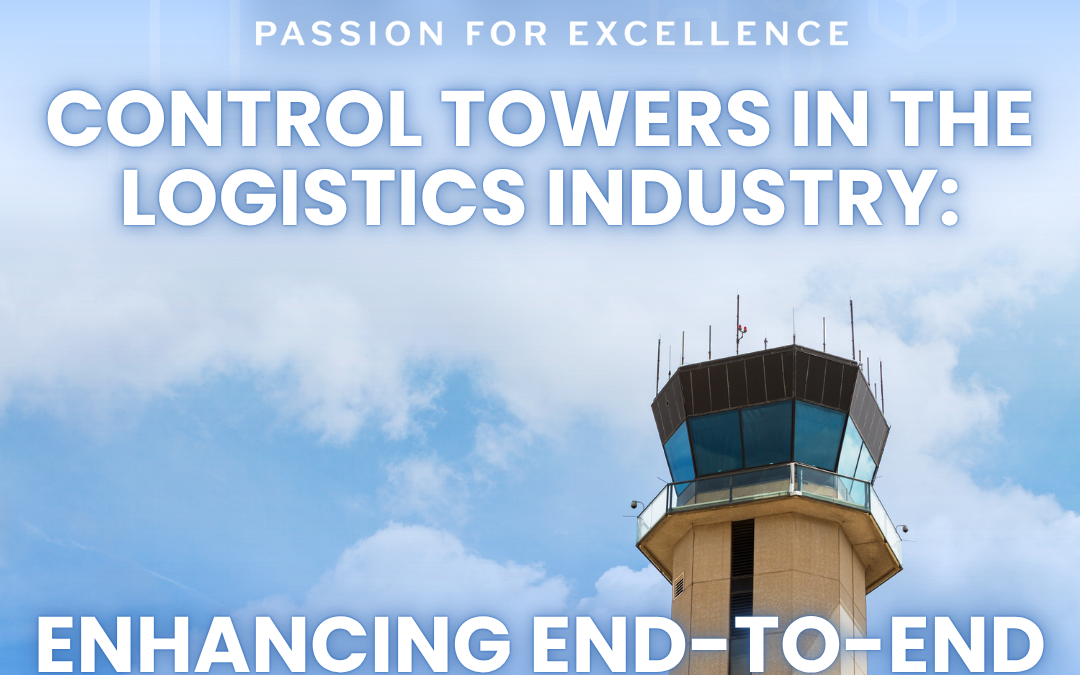
by vanessahuber | Jul 9, 2025 | News
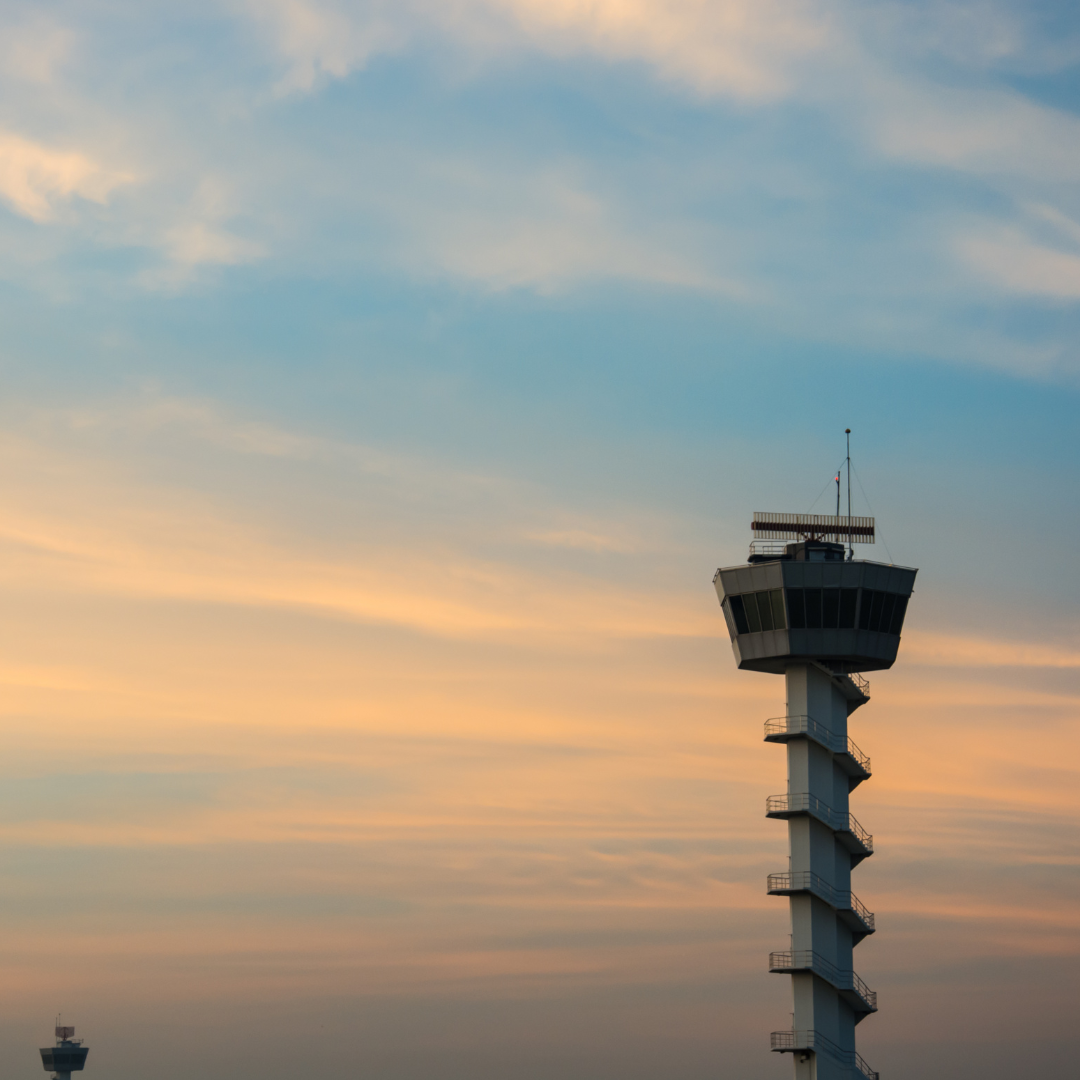
In the complex world of logistics, ensuring that every part of the supply chain operates smoothly can be a challenging task. One solution that has emerged to tackle this complexity is the implementation of global supply chain control towers. Global control towers are revolutionizing the way businesses manage their operations, offering enhanced end-to-end visibility and improving operational efficiency.
What are Global Supply Chain Control Towers?
Control towers in the logistics industry serve as centralized hubs of data and operational oversight. They integrate information from various parts of the supply chain, enabling companies to monitor, manage, and optimize their logistics processes in real-time. By acting as a single source of truth, control towers provide a comprehensive view of the entire supply chain, encompassing procurement, production, and delivery.
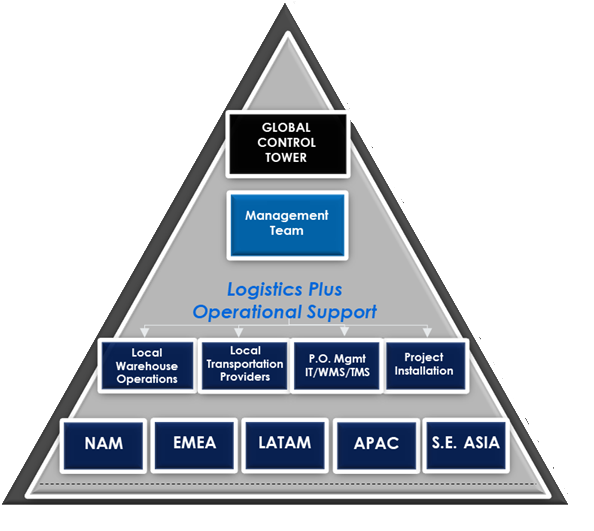
Enhancing Operational Efficiency
The primary advantage of utilizing control towers is the marked improvement in operational efficiency. By providing real-time data and insights, these platforms allow businesses to make informed decisions quickly. Whether it’s rerouting shipments due to unforeseen disruptions or optimizing delivery schedules, control towers enable logistics managers to respond proactively to changes and challenges.
Optimizing Inventory Management
Effective inventory management is crucial for any business, and control towers play a vital role in this segment of business. By offering real-time visibility into inventory levels across all locations, control towers enable companies to maintain optimal stock levels, reduce overstocking and stockouts, and ultimately lower holding costs. This level of insight allows businesses to meet customer demand without unnecessary delays or expenses.
Real-Time Supply Chain Visibility
Control towers provide an unparalleled level of visibility into the supply chain. This real-time insight enables businesses to track shipments, monitor inventory, and oversee production processes in real-time. With this data at their fingertips, logistics managers can make data-driven decisions, improving response times and reducing the risk of errors.
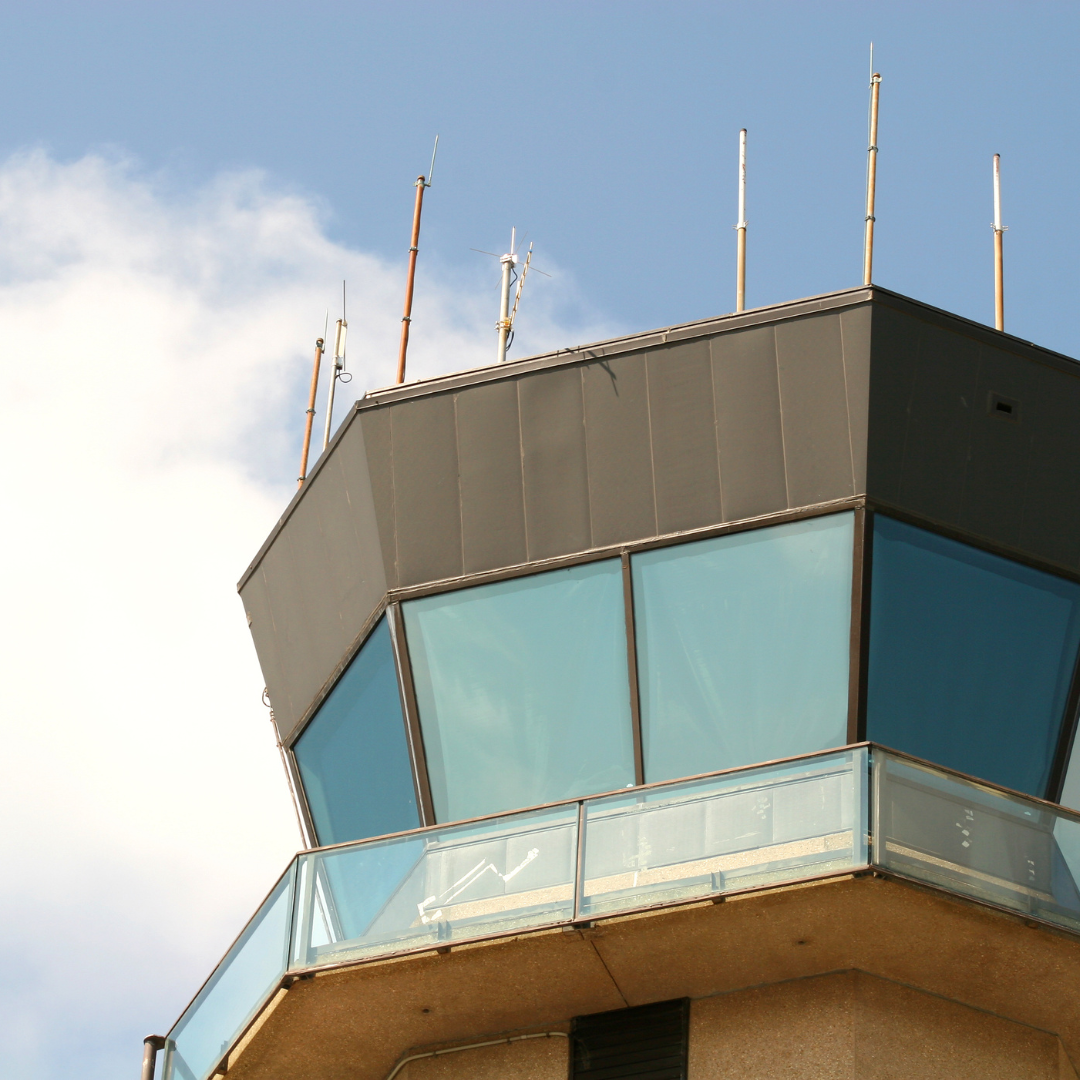 Improving Customer Experience
Improving Customer Experience
The integration of control towers in logistics is transforming how businesses manage their supply chains. By offering enhanced visibility and operational efficiency, these platforms empower companies to optimize their logistics processes, streamline inventory management, and improve customer satisfaction. As the logistics industry continues to evolve, the adoption of control towers will be crucial for businesses looking to stay competitive and meet the demands of an ever-changing market.
Logistics Plus Global Control Tower Solutions
Are you looking for a comprehensive global supply chain control tower model that offers complete scalability, adaptability, and process continuity? Look no further. The Logistics Plus Global Control Tower model is readily integrated and expertly supported by our Global Control Tower support team’s “boots on the ground” experience, allowing for faster setup time and training.
Contact us today for more information.

by vanessahuber | Jul 8, 2025 | Testimonials
“I was introduced to Logistics Plus by a mutual business contact. We had been let down regarding a shipment, and my contact thought LP might be able to help. To set this into context, we had a shipment due to leave Fuzhou, China, on the 20th (Friday) of the month, via airfreight; the consignment totaled 91 cartons of product. On the morning of the shipment, I was informed that there was no flight, our goods had been missed or left, and that there was no available way to ship before the 26th (six days late). This is the date by which delivery had to be made to my client.”
“I tried paying more money, asking if we could ship from another airport, and arranging a private aircraft, all to no avail; there was nothing to be done. My business and client are both in the UK, so with China ahead of us, we were really on the back foot. I put in my first call to Logistics Plus at 5:15 pm UK time on the 21st (Saturday). Jennifer Elstone and her team then managed everything. She arranged to ship the goods via road to Shanghai, have them booked onto a direct flight, and delivered into the UK on the 25th (Wednesday) by 10 am UK time. The LP team kept me up to date with information throughout, regardless of time, country, or day of the week. Even when UK customs held the shipment for just over 24 hours, they continued to press on our behalf, and we managed to have the goods delivered on the evening of the 26th, the day the client required them. This inordinate effort ensured that goods required for sale at an event were available and on the shelves by 8:00 a.m. the following morning.”
“I cannot praise or recommend highly enough the service and can-do attitude of Jennifer, her team, and all I encountered within Logistics Plus. I will certainly use them in the future for any logistics needs I may have.”
-Logistics Manager
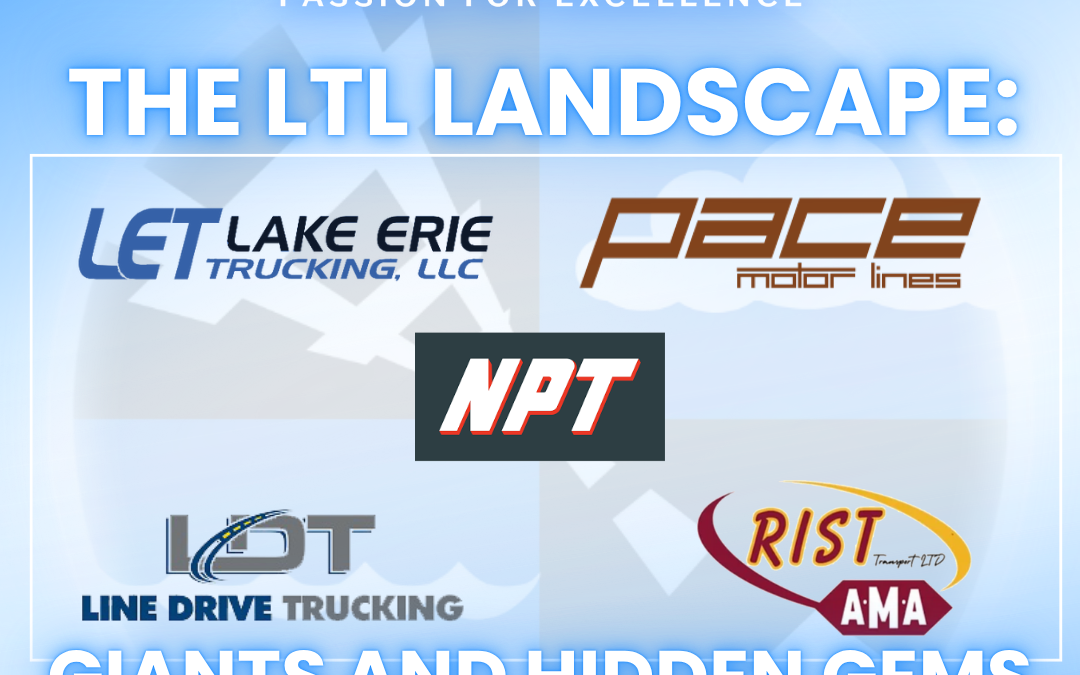
by vanessahuber | Jul 2, 2025 | News
 The U.S. LTL industry is a fascinating mix of massive national carriers and agile regional specialists. According to analysts, the top 25 LTL carriers control over 80% of total market capacity and revenue, underscoring a highly consolidated industry structure. This tight control by a few players creates consistent pricing and capacity but may also leave gaps, especially in unique regional or specialized service needs.
The U.S. LTL industry is a fascinating mix of massive national carriers and agile regional specialists. According to analysts, the top 25 LTL carriers control over 80% of total market capacity and revenue, underscoring a highly consolidated industry structure. This tight control by a few players creates consistent pricing and capacity but may also leave gaps, especially in unique regional or specialized service needs.
Major Carriers: The Backbone of LTL
Leading companies like FedEx Freight, Old Dominion Freight Line, Estes Express Lines, XPO, R+L Carriers, Saia, and ABF Freight dominate this top‑25 tier. These giants offer:
- Nationwide hub‑and‑spoke infrastructure
- Advanced tracking systems
- Ability to absorb high volumes
As noted by the Journal of Commerce, even with “soft demand,” these carriers have posted gains of around +3.9% in revenue and +2.7% in daily volumes, proving their resilience.
Transport Topics also provides annual rankings of the top LTL carriers in the industry.
The Value of Regional & Niche LTL Carriers
Yet, beyond this elite group lies a rich ecosystem of regional and niche LTL carriers. These providers excel in flexibility, personalized service, and local expertise, often overlooked by large shippers but essential for certain lanes or special requirements.
Logistics Plus, for instance, frequently taps into specialized carriers to meet customers’ diverse LTL freight needs. Some standout examples include:
- R
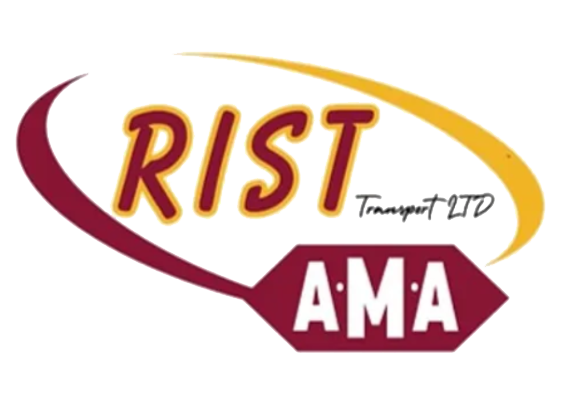 IST Transport — Northeast
IST Transport — Northeast
RIST possesses a deep understanding of New England and Mid‑Atlantic logistics, offering seamless access to tight urban hubs, expedited local pickups, and higher service touch in congested corridors.
- Pace Motor Lines — CT, MA, NJ, Metro NY, RI
 Pace’s strategic location on Interstate I-95 makes us the first choice for time and damage-free transportation within its geographic footprint. Their professional and TSA-certified drivers offer superior performance, real-time PODs, and great customer service.
Pace’s strategic location on Interstate I-95 makes us the first choice for time and damage-free transportation within its geographic footprint. Their professional and TSA-certified drivers offer superior performance, real-time PODs, and great customer service.
 Lake Erie Trucking — Central U.S.
Lake Erie Trucking — Central U.S.
Well‑versed in serving the Erie, Cleveland, Pittsburgh, and Buffalo markets, this carrier blends cross‑dock efficiency with dependable regional service—an excellent option for consolidated shipments in the industrial Great Lakes.
 North Park Transportation — Upper West
North Park Transportation — Upper West
Operating in mountain‑adjacent regions (e.g., Idaho, Montana, Utah, Colorado), North Park tackles geographic challenges like high‑altitude routes, seasonal roads, and remote deliveries, offering expertise the larger carriers may struggle to match.
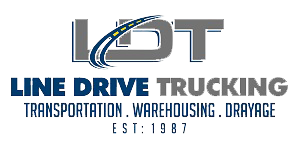 Line Drive Trucking — Southern California
Line Drive Trucking — Southern California
Specializing in SoCal freight, this carrier maneuvers heavily congested freeways and dense urban volumes to deliver ark-fast, reliable regional service in port and metro lanes, offering a nimbleness that big national carriers can’t replicate.
Why Partner with Both Types?
Bringing together the stronghold of the top‑25 carriers and the specialized strengths of niche providers gives Logistics Plus a layered advantage:
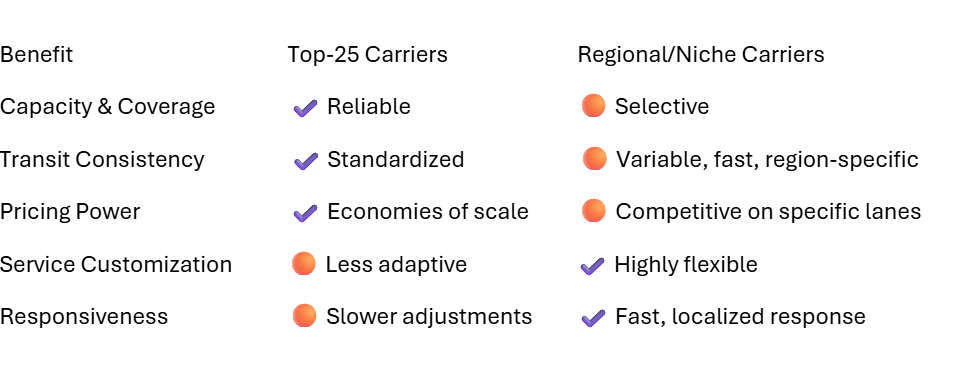
By blending both, shippers gain the best of both worlds: robust backbone capacity plus precision regional expertise—all orchestrated by a logistics integrator who knows where each carrier excels.
2025 & Beyond: A Shifting Landscape
Despite broader economic pressures, the LTL sector remains strong. Carriers in the top rung are regaining momentum, with volume and revenue growth rebounding. This stabilization not only benefits the giants but also opens opportunities for regional and niche providers who can scale thoughtfully in underserved corridors.
At the same time, consolidation continues—big players are acquiring smaller rivals and expanding their terminal networks, potentially increasing demand for specialized partnerships in harder-to-serve regions.
Bottom Line
The top‑25 LTL carriers dominate more than 80% of the market, ensuring capacity, infrastructure, and pricing stability.
However, regional and niche carriers like RIST, Pace, Lake Erie, North Park, and Line Drive bring local responsiveness and customized service, crucial for many customers’ needs.
Logistics Plus offers access to both—balancing scale and structure with regional mastery and agility to create flexible, reliable, cost-effective solutions.
By partnering with both mega-carriers and agile niche players, Logistics Plus helps shippers avoid being one-size-fits-all, ensuring every load finds the best path at the right price, with service that fits its unique journey.
Contact us for more information.


 Shippers, take note: major freight classification changes from the National Motor Freight Traffic Association (NMFTA) go into effect this weekend, July 19–20, 2025. These updates to the National Motor Freight Classification® (NMFC) system are designed to emphasize freight density further and will significantly impact how LTL (less-than-truckload) shipments are rated, quoted, and invoiced.
Shippers, take note: major freight classification changes from the National Motor Freight Traffic Association (NMFTA) go into effect this weekend, July 19–20, 2025. These updates to the National Motor Freight Classification® (NMFC) system are designed to emphasize freight density further and will significantly impact how LTL (less-than-truckload) shipments are rated, quoted, and invoiced.  Why Density Matters More Than Ever
Why Density Matters More Than Ever 


 What is LTL Shipping?
What is LTL Shipping? Types of Guaranteed Options
Types of Guaranteed Options


 Improving Customer Experience
Improving Customer Experience
 The U.S. LTL industry is a fascinating mix of massive national carriers and agile regional specialists. According to analysts, the
The U.S. LTL industry is a fascinating mix of massive national carriers and agile regional specialists. According to analysts, the 
 Pace’s strategic location on Interstate I-95 makes us the first choice for time and damage-free transportation within its geographic footprint. Their professional and TSA-certified drivers offer superior performance, real-time PODs, and great customer service.
Pace’s strategic location on Interstate I-95 makes us the first choice for time and damage-free transportation within its geographic footprint. Their professional and TSA-certified drivers offer superior performance, real-time PODs, and great customer service.  North Park Transportation
North Park Transportation Line Drive Trucking
Line Drive Trucking